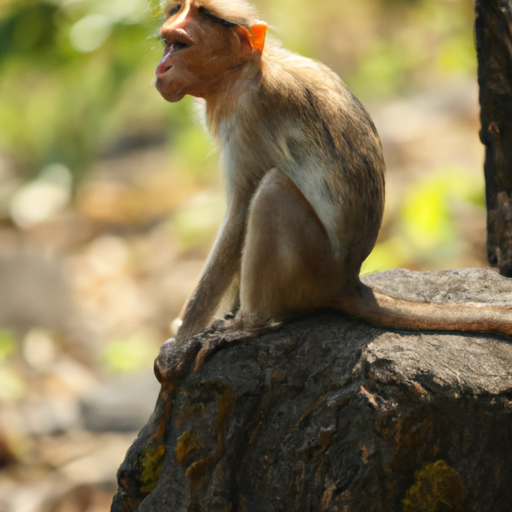 Animal breeding is a scientific process that involves the selective mating of animals with desirable traits to produce offspring with improved qualities. This process has been practiced by humans for thousands of years and has played a crucial role in the domestication and improvement of various animal species. Animal breeding has not only contributed to the development of livestock and companion animals but has also had significant implications in fields such as agriculture, medicine, and conservation.
Animal breeding is a scientific process that involves the selective mating of animals with desirable traits to produce offspring with improved qualities. This process has been practiced by humans for thousands of years and has played a crucial role in the domestication and improvement of various animal species. Animal breeding has not only contributed to the development of livestock and companion animals but has also had significant implications in fields such as agriculture, medicine, and conservation.
The origins of animal breeding can be traced back to the early days of human civilization when humans first began domesticating animals. They observed that certain animals possessed desirable traits such as increased size, better milk production, or stronger work abilities. These traits were selected and favored by humans, leading to intentional breeding practices that amplified these characteristics in subsequent generations.
Over time, animal breeding evolved from a purely observational process to a more systematic and scientific approach. The understanding of genetics and inheritance patterns greatly influenced the breeding practices. Gregor Mendel’s work on pea plants in the mid-19th century laid the foundation for the understanding of genetic inheritance, which was later applied to animal breeding.
Selective breeding involves choosing specific animals with desirable traits and mating them together to produce offspring that inherit these traits. The traits can be physical, such as size, color, or shape, or they can be functional, such as increased milk production, disease resistance, or improved temperament. By selectively breeding animals with these desired traits, breeders aim to improve the overall quality and performance of the population.
One of the key principles of animal breeding is heritability, which refers to the extent to which traits are passed on from parents to offspring. Some traits are highly heritable, meaning they are strongly influenced by genetic factors and can be reliably reproduced in subsequent generations. Other traits may be influenced by both genetic and environmental factors, making them less predictable and more challenging to improve through breeding alone.
To achieve desired traits, breeders employ different breeding strategies, including inbreeding, line breeding, outcrossing, and crossbreeding. Inbreeding involves mating closely related individuals, such as siblings or parent-offspring, to concentrate desirable traits within a population. While inbreeding can lead to the fixation of favorable traits, it also increases the risk of inheriting harmful recessive traits and reducing overall genetic diversity.
Line breeding is a less intense form of inbreeding that aims to maintain certain desirable traits while minimizing the risk of inbreeding depression. Outcrossing, on the other hand, involves mating unrelated individuals from the same breed or closely related breeds to introduce genetic diversity and improve overall health and vigor. Crossbreeding is the intentional mating of animals from different breeds or species to combine desirable traits from both parent populations.
In recent years, advancements in genetic technologies, such as artificial insemination, embryo transfer, and genetic engineering, have further revolutionized animal breeding. Artificial insemination allows breeders to select and use semen from superior males, even if they are located far away. Embryo transfer enables the production of multiple offspring from a single female with desirable traits, amplifying the impact of outstanding individuals. Genetic engineering techniques, such as gene editing, offer the potential to introduce specific genetic modifications to animals, potentially enhancing traits like disease resistance or productivity.
Animal breeding has had a profound impact on various aspects of human society. In agriculture, it has led to the development of high-yielding crops and improved livestock breeds, resulting in increased food production and better nutrition. In the dairy industry, selective breeding has led to cows with higher milk yields and improved milk quality. In the realm of companion animals, breeding has resulted in the development of numerous dog and cat breeds with distinct characteristics and temperaments.
Furthermore, animal breeding has contributed to medical advancements. Breeding of laboratory animals with specific genetic traits has enabled the study and understanding of various diseases and the development of treatments. Transgenic animals, which have been genetically modified to produce specific proteins or serve as models for human diseases, have played a vital role in medical research.
In the context of conservation, animal breeding has been instrumental in the preservation of endangered species. Breeding programs in zoos and wildlife parks aim to increase the genetic diversity and overall population size of endangered species, with the ultimate goal of reintroducing them into their natural habitats.
However, animal breeding is not without controversy. Critics argue that intensive breeding practices focused solely on specific traits often neglect the overall health and welfare of animals. In some cases, breeding for extreme traits, such as exaggerated physical features in certain dog breeds, has led to health issues and reduced quality of life for the animals. It is crucial for breeders to prioritize the well-being of animals and consider the long-term consequences of their breeding programs.
In conclusion, animal breeding is a multidisciplinary field that combines genetics, biology, and husbandry practices to improve the traits and performance of animals. It has been instrumental in the domestication and improvement of various animal species, contributing to food production, medical research, and conservation efforts. While animal breeding has undoubtedly yielded significant benefits, it is essential to balance the pursuit of desirable traits with the overall health and welfare of animals. Continuous research and ethical considerations are necessary to ensure responsible and sustainable breeding practices for the betterment of both animals and humans.
